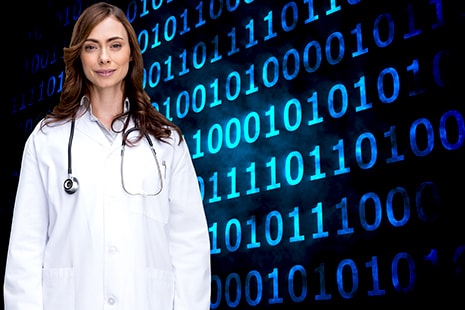Scientists at Google are studying computer algorithms in conjunction with deep learning to improve accuracy in cancer diagnosis
Orange County, CA - May 24th 2017 - Consistency in diagnosis of breast cancer between pathologists can be as low as 48%. Although the pathologists are reviewing the same patient, the plethora of information available makes unanimity nearly impossible. Alongside widespread training, there is an overabundance of information to sift through in a short amount of time, making misdiagnosis all too common.
Crucial in discovering a tumor in the early stages, a pathologist’s diagnosis also impacts a patient's therapy. Responsible for the analysis of thousands of biological tissue slides and the individual pixels within those slides, physicians must attend to these responsibilities often under limited time constraints.
In hopes of resolving these issues of timing and diagnostic inconsistency, scientists at Google are studying how computer algorithms in conjunction with deep learning can improve workflow efficacy. Deep learning is “a class of machine learning algorithms that uses a cascade of many layers of nonlinear processing units for feature extraction and transformation. Each successive layer uses the output from the previous layer as input,” according to Li Deng and Dong Yu, authors of Deep Learning: Methods and Applications.

Using scans of established tumors, Google scientists trained algorithms to look for the localization of breast cancer spreading from lymph nodes to neighboring breast tissue. Though effective, the first round of heat map scans were modified for easier reading and understanding. These alterations included training the algorithm to magnify the scans and color code the differences in between tumors and macrophages like traditional pathologists. These customizations allowed final scans to match or exceed pathologists performance of slide analysis without time restrictions. The 73% localization score increased to 89% accuracy thanks to algorithmic utilization.
Fellow scientists at Harvard and MIT were able to duplicate these scores with some of their tests earning scores of 92%. Google’s algorithm was also able to examine tissue scans from numerous hospitals with a variety of scanning devices with unpredictable image qualities. While these tests are very inspiring, the scientists are aware of their caveats. Most importantly, a computer scan will never have the breadth of knowledge or experience of a human pathologist. With a constant influx of discoveries dealing with cancerous tumors, only a human will be able to compare and differentiate between cases correctly.
The commencement of these studies has led Google off to a very promising start. Worldwide scientists are banning together to share their findings in hopes of accelerating the research’s potential to eventually reach 100% accuracy in cancer detection.
Contact Ampronix:

Email: info@ampronix.com
International Sales: +1 949-273-8000
Domestic Sales: 1800-400-7972 for US and Canada
Follow Us:
Share This Article:
View our Product Catalog Online Here
About Ampronix
Ampronix is a renowned authorized master distributor of the medical industry's top brands as well as a world-class manufacturer of innovative technology. Since 1982, Ampronix has been dedicated to meeting the growing needs of the medical community with its extensive product knowledge, outstanding service, and state-of-the-art repair facility. Ampronix prides itself on its ability to offer tailored, one-stop solutions at a faster and more cost-effective rate than other manufacturers.
Ampronix is an ISO & ANSI/ESD certified facility. To learn more go here.
Scientists at Google are studying computer algorithms in conjunction with deep learning to improve accuracy in cancer diagnosis Orange County, CA – May 24th 2017 – Consistency in diagnosis of breast cancer between pathologists can be as low as 48%. Although the pathologists are reviewing the same patient, the plethora of information available makes unanimity nearly impossible. Alongside widespread […]



